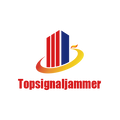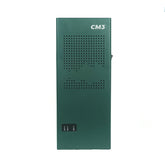Drifted by GPS jamming
GPS/GNSS interference at sea
From building offshore wind farms and harbor dredging to marine surveying and laying submarine cables, GPS receivers have established themselves as a critical component in many offshore and nearshore applications. Any interruption of GPS positioning at sea can have dangerous and costly repercussions. Increasingly, GPS downtime is attributed to interference.
The location of an in-car noise jammer on Shelter Island used to simulate the effects of GPS interference in San Diego Bay
Transmitted with power equivalent to that of a standard light bulb, GPS signals are expected to travel over 20,000 km (12,400 miles) and still arrive capable of high-precision position calculations. In most cases the signals arrive relatively unscathed, however, being barely discernible above the thermal background noise, they can be sitting ducks for any passing interference.
RTK and PPP are particularly vulnerable
Maritime applications are increasingly using high precision positioning such as RTK and PPP which not only use the modulated code information on the signals, but also the phase of the signal itself. In the presence of interference, these phase-based modes are the first to suffer.
How bad can it be
The use of GPS jammer is strictly prohibited but their effect can be estimated using a GPS simulator. Using the Port of San Diego as an example, a simulator was programmed to generate the GPS signals that a receiver would see on a boat at that location. Interference from GPS signals was mimicked by mixing the signal from the simulator with that from a jammer. With the jammer at the location shown in Figure 1 and the GPS receiver on a nearby boat in the bay, the effect of interference throughout the bay could then be extrapolated using radio wave propagation models standard.

Effect of a chirp jammer
The results in Figure 2 show that without AIM+ interference mitigation, a small 10 mW chirp jammer can neutralize RTK positioning over several hundred meters. When AIM+ is enabled, the non-RTK zone is reduced to a few meters in direct proximity to the jammer.
The effect of a 10 mW chirp jammer on GPS positioning in San Diego Bay with and without AIM+ interference mitigation
Effect of a continuous wave jammer
Repeating the tests with a continuous wave (CW) jammer of the same power, the results using AIM+ are even more dramatic as shown in Figure 3. Without AIM+, a CW interferer in the parking lot near the shore prevents RTK positioning or any GPS positioning over a large part of the bay and extends for several kilometers out to sea within line of sight of the jammer.
The effect of a 10 mW continuous wave jammer on GPS positioning in San Diego Bay with and without AIM+ interference mitigation
Troubleshoot Interference
A comprehensive approach puts interference considerations at the forefront of receiver design and incorporates them into every step of signal processing. In the case of the AsteRx4 OEM and AsteRx-U, the antenna signal is immediately digitized after filtering and automatically cleaned of interference using several adaptive notch filters.
Depending on the nature of the interference, the stopband bandwidth is automatically adjusted between a few kHz notch to 1 MHz rejection. Notch filters are complemented by an adaptive filter capable of rejecting more complex types of interference such as those from chirp jammers, frequency hopping signals from DME/TACAN devices as well as high power Inmarsat transmitters.













